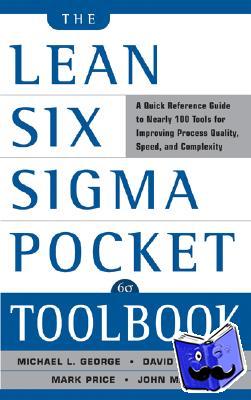Stel een vraag
Ik heb een vraag over het boek:
‘The Lean Six Sigma Pocket Toolbook: A Quick Reference Guide to Nearly 100 Tools for Improving Quality and Speed - George, Michael, Maxey, John, Rowlands, David, Price, Mark’.
Vul het onderstaande formulier in.
We zullen zo spoedig mogelijk antwoorden.


